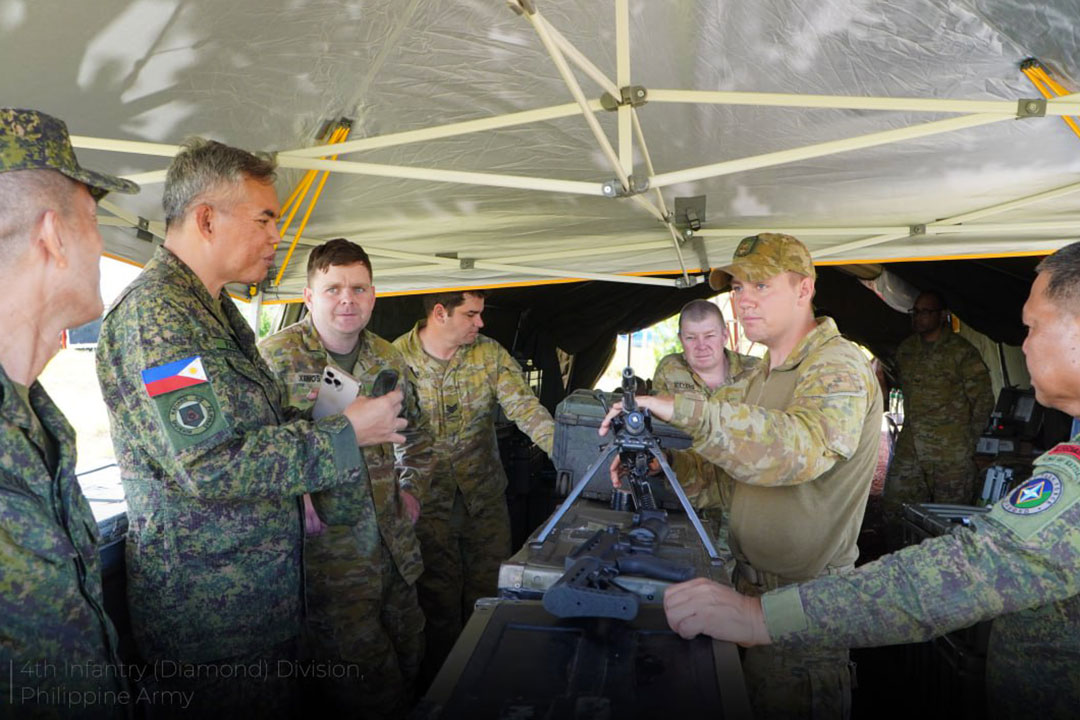China may respond to PHL’s growing military ties with Australia and Canada

By Chloe Mari A. Hufana and Kenneth Christiane L. Basilio, Reporters
TENSIONS in the South China Sea could intensify in the coming months as China weighs possible military and economic countermeasures against the Philippines, following Manila’s deepening security cooperation with Australia and Canada, political analysts said.
The move signals a strategic recalibration by the Philippines, but also risks provoking a more assertive response from Beijing, they added.
Josue Raphael J. Cortez, a diplomacy lecturer at De La Salle-College of St. Benilde, said Beijing is likely to interpret the recent trilateral naval drills involving the Philippines, Australia and Canada as a direct challenge to its dominance in the contested waters — one of the world’s busiest maritime routes.
“We can expect that Beijing will further undertake maneuvers geared towards showing its might and reinforcing its strategic position within the disputed waters,” he said in a Facebook Messenger chat. “Although the Philippines and Australia do not view such joint operations as a clarion call for armed conflict, China may view it otherwise.”
On Saturday, the three nations conducted joint naval drills in the South China Sea, off the coast of El Nido, Palawan province. The exercises formed part of Exercise Alon (wave) 2025, which Canberra has identified as its biggest military engagement of the year. The drills came just days after the second Philippines — Australia defense ministers’ meeting in Manila.
During the meeting, Philippine Defense Secretary Gilberto C. Teodoro, Jr. and Australian Deputy Prime Minister Richard Marles reaffirmed their countries’ commitment to deepening defense cooperation, underscoring the 2016 international arbitral ruling that voided China’s sweeping claims over the South China Sea.
While the Philippine government maintains that these drills are not designed to provoke China, Mr. Cortez noted that Beijing could interpret them as an aggressive move, prompting it to scale up both military and economic pressure.
“The Australian Defense secretary himself has argued that it is the shared desire of our two countries is to propel their military and defense partnership, with Exercise Alon being Australia’s largest joint exercise this year,” Mr. Cortez said.
The Philippines and Australia are expected to formalize a bilateral defense partnership the next year — a development likely to factor into Beijing’s strategic calculations.
Analysts think China’s response might not be limited to naval activities. Mr. Cortez noted that Beijing, as the Philippines’ biggest trading partner, could use economic tools such as trade restrictions or travel advisories to pressure Manila.
“China may employ economic levers to show discontent,” he said. “But it is not something that would heavily debilitate our ties and the Philippine economy in general — with tourism as a prime mover in its entirety — as we have diversified our trade ties with like-minded nations in recent years.”
He added that while tourism remains a significant economic driver, the Philippines’ growing trade relationships with countries like Japan, South Korea, and the US offer alternative economic pathways.
Manila and Canberra reaffirmed commitments under their status of visiting forces agreement and mutual logistics support arrangement. These frameworks will facilitate more regular joint operations, logistics exchanges and interoperability between their armed forces.
Exercise Alon is now regarded as the flagship bilateral drill between the two countries, complementing the Philippines’ participation in Australia’s Talisman Sabre 2025.
The two sides also committed to holding a third defense ministers’ meeting next year to deepen cooperation.
Meanwhile, defense analysts urged the Philippine government to consider expanding its joint maritime drills with partners beyond the South China Sea to include other vulnerable maritime zones such as the Luzon Strait, located between northern Philippines and Taiwan.
“An expansion of maritime cooperative activities (MCA) is beneficial for the country’s defense posture,” Sherwin E. Ona, a security analyst and associate professor at De La Salle University, said in a Viber message. “MCAs should include the Luzon Strait and other maritime areas where there are vulnerabilities.”
The Luzon Strait has recently become a hotspot for Chinese activity, with Philippine authorities confirming the presence of Chinese coast guard vessels and research ships near Mavulis Island in Batanes Province, which lies just 140 kilometers from Taiwan’s southern coast.
Defense experts warned that treating the waters off northern Luzon as “off limits” for maritime cooperative activities due to potential Chinese sensitivities could send the wrong signal.
“It’s important for the Philippines to be clear that its maritime domain is large and it is committed to defending all of it,” Raymond M. Powell, a fellow at Stanford University’s Gordian Knot Center for National Security Innovation, said via Messenger chat. “If it treats its northern region as off limits simply because China will interpret it as provocative, it then sends the message that Beijing has veto power over what the Philippines does in its own waters.”
Rear Admiral Roy Vincent T. Trinidad, spokesman for the Philippine Navy, last week said the Philippines is looking at boosting its “defense diplomacy efforts” when asked about the possibility of expanding areas where joint naval exercises could be held.
“We do not announce in advance our forthcoming activities or operations,” he told a news briefing. “But the moment that these are finalized by all parties, then the appropriate guidance will be issued.”
While international partnerships provide short-term deterrence and diplomatic leverage, former Navy officer Rommel Jude G. Ong, now a professor at the Ateneo de Manila University, cited the importance of building up independent capabilities.
“I look at sustained naval presence and conduct of sea exercises in Luzon Strait as a way to assert our sea control and deter China from even thinking of extending their encroachment in our northern exclusive economic zone,” he said via Viber. “Our navy is capable of conducting unilateral patrols.”
He noted that while MCAs serve a diplomatic function, they are conducted only periodically. What’s needed, he said, is a round-the-clock naval presence.
Chester B. Cabalza, founder of the think tank International Development and Security Cooperation, cited the need for strategic depth through alliances. “The goal is continuity of joint naval exercises to elevate maritime security and the rules-based order.”
Mr. Ona cited the need to upgrade Subic Bay into a logistics hub that could support larger multinational forces. He also advocated for strengthening area denial capabilities through investments in advanced missile systems such as India’s BrahMos and the US-made High Mobility Artillery Rocket System (HIMARS).
“We need to understand that MCAs are part of a broader deterrence strategy,” he said. “Having a solid logistics hub is necessary for this purpose.”



